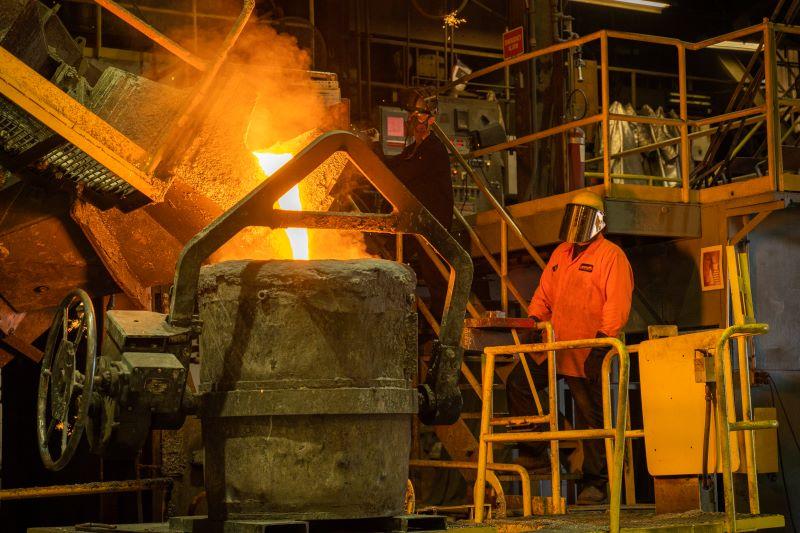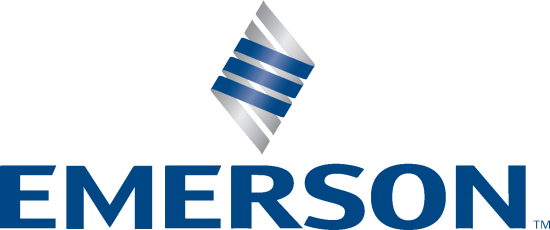Ductile iron is an exceptional material for making components with enviable qualities. The best ductile iron castings are tough and reliable thanks to ductile iron's excellent strength-to-weight ratio. Ductile iron is also less costly than steel. This means superior-quality castings can be produced at an affordable price.
Make no mistake, however, not all ductile iron parts boast these qualities. It all comes down to the materials used in making the ductile iron and the strong execution of each step in the casting process. We focus on both at Urick — and together, they make us the best cast foundry for all your ductile iron needs.
Read on to find out how we select the very best inputs and bring them together in a tried and true process to make exceptional ductile iron for numerous applications.
How Urick Achieves Casting Quality
It's true — we've been at this for a while. But, here at Urick, complacency never sets in. We won't let it. We stay on top as the best cast foundry by always paying close attention to the materials we use and how these affect the products we make for our clients. But before anything else, quality castings begin with quality people.
People
Urick team
Knowing how to cast is one thing, knowing who to cast is another. Urick deeply understands the value of team, and strives to provide our foundry employees with a safe, effective work environment they can be proud of. The result? An unrivaled safety record and the best lead times in the industry.
Emerson ownership
Founded as a family business in 1905, Urick has been a part of the Emerson group since 1974. Throughout this chapter in our history, Emerson has invested heavily in upgrading our facilities, making it possible for us to achieve that "best cast foundry" status of which we are extremely proud.
As a member of Emerson, a Fortune 500 company, our continued longevity is guaranteed. It gives our clients peace of mind in our stability as a supplier of ductile iron and confidence in choosing us to make the very best ductile iron castings for their projects.
Process
In-mold inoculation process
Nodularity is what makes ductile iron, well… ductile. It gives it the ability to bend and stretch better than its much more brittle pig iron and gray iron counterparts. Nodularity is also responsible for ductile iron's superior impact resistance and wear resistance.
Spheroidal graphite nodules are distributed throughout the ductile iron's microstructure. Their round shape helps to reduce stress concentration points within the material and prevents cracks from forming. They are created by introducing an inoculant such as magnesium to the melt — a discovery first made in 1943 by Keith Millis, an American metallurgical engineer.
At Urick, we use our proprietary vertical in-mold inoculation method to infuse magnesium into the melt at a steady and even rate. Molten iron flows into a reaction chamber built into the mold's inlet, which harbors a magnesium-containing alloy that gradually dissolves into the mixture.
Our process produces ductile cast iron that has superior nodularity and machinability. Plus, we can adjust the properties of the finished casting by tweaking any of several factors in the process, such as the rate at which the molten iron is poured.
High-speed vertical DISA
DISAMATIC vertical green sand molding machines are optimized for speed, quality, and reliability — minimizing guesswork for operators and ensuring that the finished product is as precise and accurate as possible. Their vertical orientation allows for high throughputs without monopolizing the amount of floor space that horizontal molding lines do. Better yields = shorter lead times.
Fine grain sand
Urick's attention to detail is what customers look for in a ductile iron foundry, and one of the things that sets us apart. This is obvious in the use of fine grain sand in our molds. In fact, we use the finest grain sand in the industry.
Fine grain sand is used as face sand in molds. It touches the surface of the pattern and comes into direct contact with the molten ductile iron. The result is components with a better surface finish with better quality lettering on each piece.
Decades of pattern-building experience
Pattern creation is the first step in ductile iron casting and it is a very important part of the overall process. It involves making a replica of the component and using this replica to create a cavity in a fine-grain sand mold. That cavity is what we pour the molten iron into to create the actual component. That means accuracy in pattern building is of the utmost importance.
Urick uses up-to-date urethane pattern technology to produce patterns with the highest precision. Our in-house patterns reduce annoying parting line flash and are produced in a very cost-effective way. We take the complexity of the finished component into consideration when designing a pattern, so the casting meets your exact specifications while facilitating easy mold removal.
We offer our clients lifetime patterns that they own. We store and maintain these patterns for our clients and will replace them at no extra cost once they become worn.
Inputs
LOW PHOSPHOROUS pig iron
Pig iron, or crude iron, is obtained as an intermediate product when iron ore is smelted to produce steel. It contains a higher percentage of carbon than steel does, along with some silica and other components. Pig iron is quite brittle but it is typically remelted and used in the creation of other iron products, such as wrought iron and gray iron. And, if the purity of the pig iron is high enough, it can be used to make ductile iron, too.
High-grade pig iron is the principal iron-containing material used in the production of ductile iron. Compared to other grades of pig iron, it has a relatively high carbon content but low concentrations of manganese, phosphorus, and sulfur.
The best ductile iron casting process uses high-grade pig iron because:
- It has a very low percentage of residual or harmful elements.
- It is consistent in its composition or chemistry.
- Its performance in alloys and processing is predictable.
Ductile iron made from high-grade pig iron is known to produce the best quality components for engineering, automotive, and energy systems.
HIGH-GRADE steel
Scrap steel is recyclable steel left over from manufacturing processes and product use. It has a monetary value and definitely should not be considered a waste material. As a general rule, the better the quality of scrap steel is, the higher that value will be.
Prime or premium scrap steel comes in all sorts of shapes, colors, and sizes. It is described as clean, pure scrap because it is leftover from the manufacture of new products such as automobiles and plumbing fixtures
It is also called "prompt," "industrial", and "new" scrap — and it's no wonder this kind of steel scrap is in high demand. It is desirable because of the predictability of its composition which includes having low percentages of non-ferrous metals alloyed in it. These so-called "tramp elements" may be difficult to remove and may affect the ductile iron process in even the best foundry.
Witness the Urick difference
We do ductile iron differently — and that difference is evidenced in the superior quality of the components we make for you. Reach out to Urick today for a quote or simply to learn more about what ductile can do for you.



